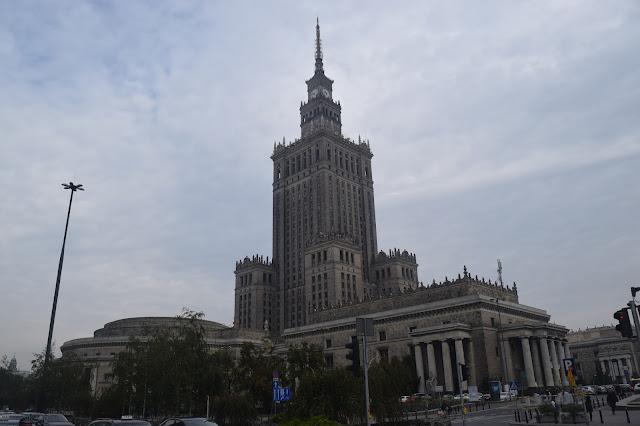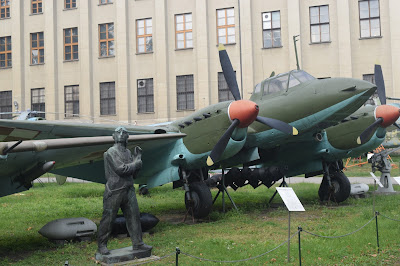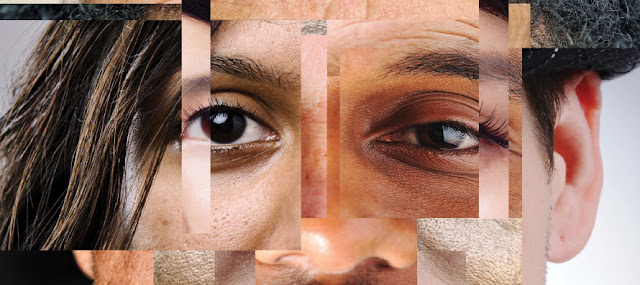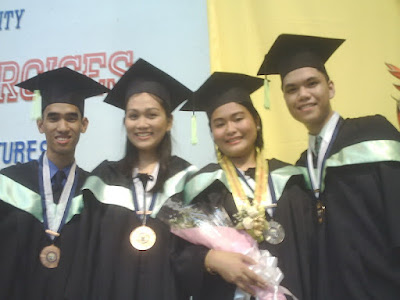Warsaw, Poland: Peek to Polish Identity Part 1
The largest and the
capital city of Poland, located along the Vistula River is considered one of
the most historical European city. It became the capital of the union of Poland
and Lithuania before the bond was dissolved during the Polish partition in the
18th century. Thereafter, Warsaw was under the shifting influence of
the Prussians (Germans) and the Russians. From then on, these two countries
have forever shaped the history of the country. To what extent these two
countries have made a mark in Warsaw is interesting for tourists and visitors
to see. This is the focus of this blog post. This is Part 1. Click here for Part 2.
1.
Złote Tarasy
This is a modern complex composed of commercial, office and
entertainment buildings located nearby the central station. Interestingly, the
mall has the first Hard Rock Café and Burger King in Poland.
2.
Palac Kultury i Nauki
This is formerly the Palace of Culture and Science, which is the
tallest building in the Polish state. The palace was a gift of the Soviet
people to the Polish nation under Joseph Stalin, a reflection of the ties of
the two countries during the Cold War. During the millennium celebration, a
clock has been placed on one of its floors.
3.
Muzeum
Techniki i Przemysłu NOT
The Museum of Technology has the largest collection of works dating
from the pre-war era. The collection includes Polish art, motorcycles, radios,
geodetic instruments and others.
4.
Emilii
Plater
This is a square dedicated for the Polish countess and captain of the
Polish Army during the Novermber Uprising against the Russian Empire. In this
uprising, Poland lost a considerable area of its territory to the expanding
Russian Empire in the 18th century.
5.
Muzeum
Domków dla Lalek
The Palace of Culture and Science created this doll houses. Some of the
doll houses are one hundred years old.
6.
Park
Świętokrzyski
Park Holy Cross was built in the fifties. The park has the monument of
a polish-jewish doctor, who was a pioneer action in the field of diagnosing
educational activities.
7.
Teatr Lalka
This is called the theatre without barriers. The interior of the
theater are without architectureal obstacles.
8.
Teatr
Dramatyczny m. st. Warszawy. Scena
The Drama Theatre was formerly a theatre of the Polish army. This is
today a municipal theatre in the Polish capital.
9.
Warszawa Śródmieście
This is an area surrounding a railway station. It was a built of the
principle of the Spanish train solution, using a center platforms for arriving
passengers and side platforms for departing passengers.
10.
Muzeum Narodowe w Warszawie
The National Museum in Warsaw is one of the largest museums in Poland. During
the Nazi invasion of Poland was damaged.
11.
Muzeum Wojska Polskiego
Polish Army Museum contains 250,000 military and historical exhibits. It
also has iconographic archives, library, professional and specialized
workshops.
12.
Skwer Bohdana Wodiczko
This is a square dedicated for a Polish conductor and music educator. This
is located near the modernist building of the University of Music.
13.
Muzeum Fryderyka Chopina
This is a musuem devoted to Frederic Chopin. This facility has the
world’s largest collection of manuscripts of a composer.
14.
Nicolaus Copernicus Monument
It is one of the Polish capital’s notable landmarks. It is the seat of
the Polish Academy of Sciences. Nicolaus Copernicus was a Polish mathematician
and astronomer, who formulated a model of the universe that placed the Sun at
the center of the universe.
15.
Kościół Świętego Krzyża
The Holy Cross Church was destroyed during the Second World War. In
2002, Pope John Paul II raised the church to the rank of minor basilica.
16.
Palac Uruskich
This is the palace owned before by a marshal of the nobility of the
Warsaw Province. It was burned during the Warsaw Uprising during the Second
World War.
17.
Uniwersytet Warszawski
The University of Warsaw is the largest in Poland with specialties in
humanities and natural sciences. It was founded after the Polish partition in
the 17th century among the Prussians, Russians and the Austrians.
18.
Krakowskie Przedmieśchie
The Krakow suburb is the one of the most prestigious streets in the
Polish capital. This is one of the oldest avenues that connects the Royal
Castle in the 17th century.
19.
Kościół Wizytek
Church of the Visitation in Warsaw is dedicated to the St. Joseph
Immaculate Virgin Mother. It belongs to the parish of the Holy Cross.
20.
Skwer ks. Jana Twardowskiego
The Monument of Polish Roman Catholic priest and poet is located on the
square. He was a priest who participated in the Warsaw Uprising in the Second
World War.
21.
Pałac Prezydencki
The Presidential Palace is the elegant latest version of the original
building in the 16th century. It was before under the private property of
several aristocratic families. It became the seat of the Polish Congress during
the Russian occupation after the Polish partitions. It served the nations’
German occupiers during the Second World War.
22.
Pałac Potockich
The Potocki palace is the residence of one of the most influential and
powerful families in Poland. It was rented by the Embassy of Sweden and the
United States of America, and burnt down by the Germans in the Second World
War.
23.
Kościół seminaryjny w Warszawie
The Church Seminary was built in Baroque period, but the façade is
classical. This church is founded in the 18th century. It was
luckily not destroyed during the Second World War.
24.
Skwer Adama Mickiewicza
This is a square dedicated to the national poet in Poland, Lithuania
and Belarus. He was active to struggle for independence after Russian
occupation of the former Grand Duchy of Lithuania.
25.
Skwer HC Hoovera
This is a square dedicated for the 31st president of the United States
of America, who visited Poland after the First World War. During the visit, he witnessed
thousands of Polish children to pay the US president homage, Hoover gave aid to
Polish citizens during the world war.
Warsaw
is quite unique in its sense, because the city has unique identity shaped by
foreign influences. Due to its strategic location, it was invaded by Swedes,
Prussians, French, Germans and Russians. That part of history is interesting,
but painful for the Polish people. That pain and struggle will always remain in
memory, and will continue to attract tourists like me to visit and keep coming
back.




































Comments
Post a Comment